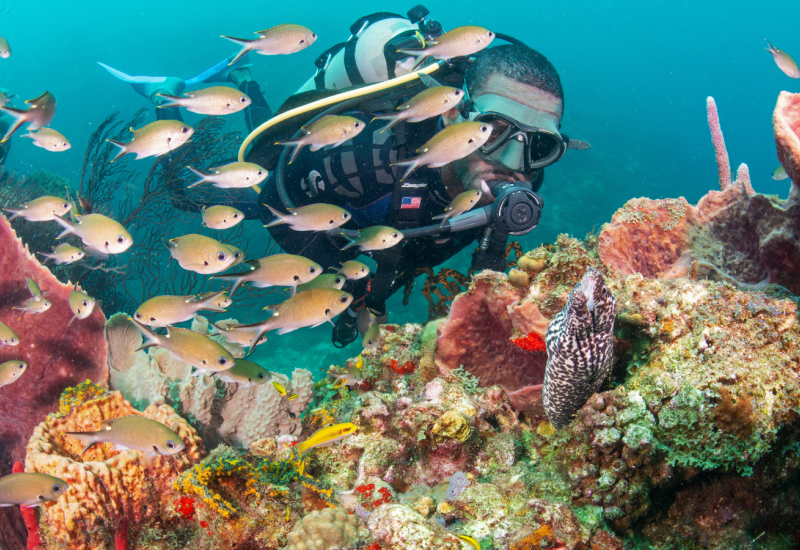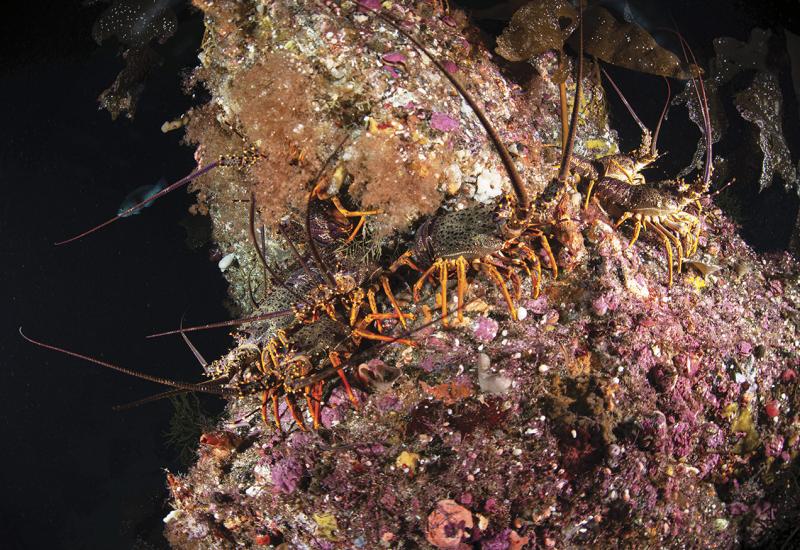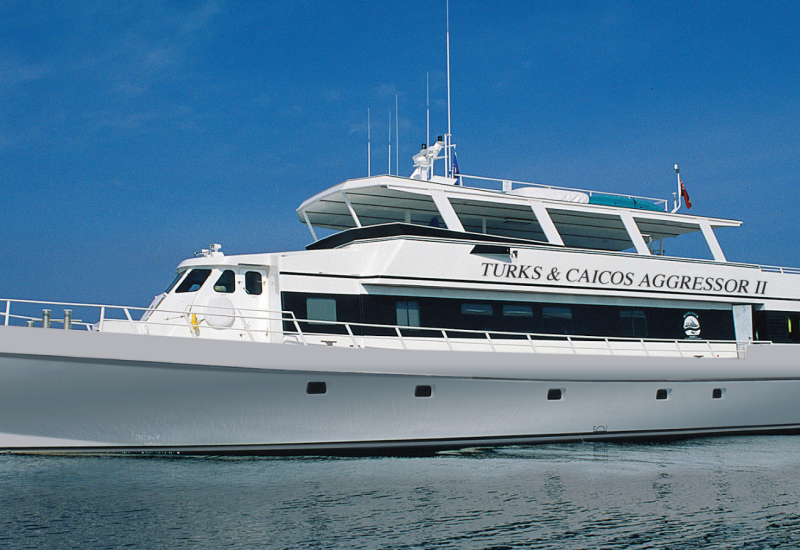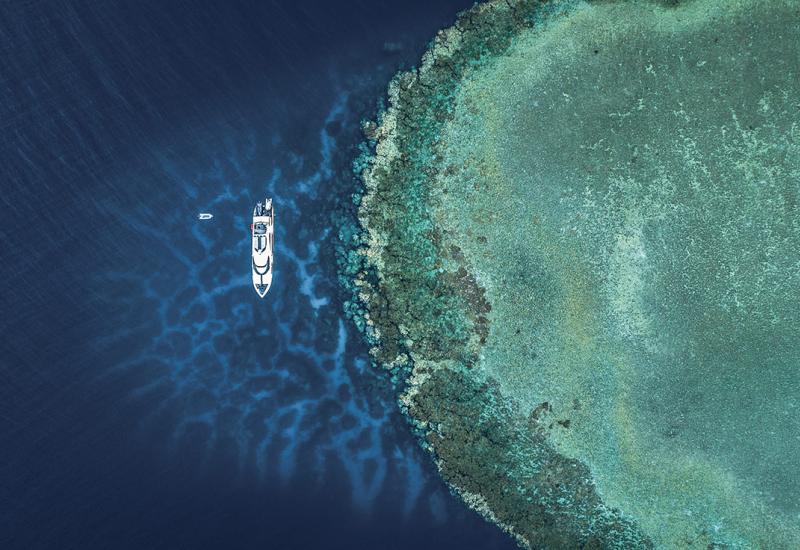15 Haunting Shipwrecks
While scuba divers enjoy reefs packed with colorful marine creatures and unique corals and big animals like sharks and rays, they also love large, intimidating wrecks that have found their final resting place in the ocean.
Shipwrecks, from North America to Asia, attract divers from all over the world because of their rich, profound history of their mysterious origins. Some are found above the waterline, some below. For example, divers can explore the Kittiwake, a former U.S. Navy ship that was deliberately sunk in 2011 off Grand Cayman, Cayman Islands. Having been used as a Navy submarine support vessel, local dive resort Sunset House Resort, says the 251-foot-long Kittiwake is the right dive for wreck aficionados who want to take a dive to the past.
Those who relish the history that often comes along with shipwrecks, can check out the Umbria in the Red Sea off Sudan. During World War II, the Italian captain ordered that the 500-foot ship be deliberately scuttled — with 350,000 bombs aboard, according to Dive Site Directory — so that his cargo would not be taken by the members of the British Navy who has boarded the Umbria.
The Liberty wreck in Bali, Indonesia, is another option. Once a supply ship for the U.S. Navy, Liberty came to an end during World War II when a Japanese torpedo struck the craft. There is currently plenty of marine life around the ship, as Tulamben Wreck Divers notes on its web site, giving the ship another life, as a haven for fish and corals.
Often transformed into living reefs, wrecks come alive when explored — much to the delight of scuba divers. But it is often their harrowing or mysterious loss that gives them a haunting quality that also moves us as divers. While some wrecks like Kittiwake were sunk deliberately, these photos showcase why we are moved by ships that are often tragically lost at sea.
While scuba divers enjoy reefs packed with colorful marine creatures and unique corals and big animals like sharks and rays, they also love large, intimidating wrecks that have found their final resting place in the ocean.

ShutterstockA somber photo of the operating table in the sick bay of the Shinkoku Maru.
Shipwrecks, from North America to Asia, attract divers from all over the world because of their rich, profound history of their mysterious origins. Some are found above the waterline, some below. For example, divers can explore the Kittiwake, a former U.S. Navy ship that was deliberately sunk in 2011 off Grand Cayman, Cayman Islands. Having been used as a Navy submarine support vessel, local dive resort Sunset House Resort, says the 251-foot-long Kittiwake is the right dive for wreck aficionados who want to take a dive to the past.

ShutterstockThe USS Kittiwake at its final resting place off Grand Cayman (image taken right after it was put down).
Those who relish the history that often comes along with shipwrecks, can check out the Umbria in the Red Sea off Sudan. During World War II, the Italian captain ordered that the 500-foot ship be deliberately scuttled — with 350,000 bombs aboard, according to Dive Site Directory — so that his cargo would not be taken by the members of the British Navy who has boarded the Umbria.

ShutterstockThe haunting beauty of an abandoned Thailand fishing boat.
The Liberty wreck in Bali, Indonesia, is another option. Once a supply ship for the U.S. Navy, Liberty came to an end during World War II when a Japanese torpedo struck the craft. There is currently plenty of marine life around the ship, as Tulamben Wreck Divers notes on its web site, giving the ship another life, as a haven for fish and corals.

ShutterstockFree diving on the very popular — and photogenic — on USAT Liberty wreck in Bali, Indonesia.
Often transformed into living reefs, wrecks come alive when explored — much to the delight of scuba divers. But it is often their harrowing or mysterious loss that gives them a haunting quality that also moves us as divers. While some wrecks like Kittiwake were sunk deliberately, these photos showcase why we are moved by ships that are often tragically lost at sea.
See more images below

ShutterstockTruck on the Thistlegorm in the Red Sea, off the coast of Egypt.

ShutterstockShipwreck
All over the world, vessels of all sizes are abandoned — some of them are wonderful dive sites, others are not.

ShutterstockRuins of an abandoned vessel.

ShutterstockCannon on a wreck off Ponza
Cannon on a wreck off Ponza, one of the Italian islands in the Pontine archipelago in the Tyrrhenian Sea.

ShutterstockA vessel in a violent blizzard
A vessel foundering during a violent blizzard — bad weather has led to the demise of a number of diveable wrecks.

ShutterstockSailing past a wreck.

ShutterstockA wreck off Hong Kong's coast.

ShutterstockAirplane wreck
Airplanes make photogenic subjects, but are also often sober reminders of lives lost during war or other disasters.

ShutterstockThe wreck of a Thailand fishing boat.

ShutterstockPalau's inner lagoon
Palau's inner lagoon harbors a fishing vessel; Palau's waters are also littered with sunken vessels from fierce World War II battles.

ShutterstockCruise ship capsized in the island off Tuscany's coast
Costa Concordia on its side near Isola del Giglio, the island off Tuscany's coast where the cruise ship capsized in 2012, killing 32 people. It has since been removed.










